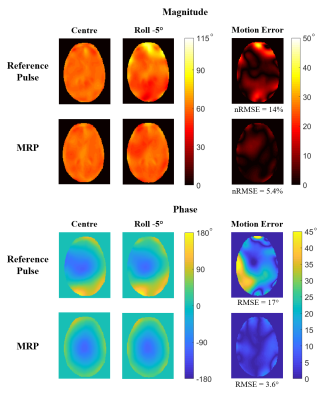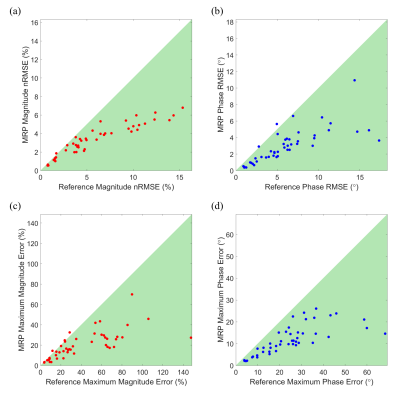Luke Watkins1, Alix Plumley2, Kevin Murphy1, and Emre Kopanoglu2
1Department of Physics and Astronomy, CUBRIC, Cardiff University, Cardiff, United Kingdom, 2Department of Psychology, CUBRIC, Cardiff University, Cardiff, United Kingdom
1Department of Physics and Astronomy, CUBRIC, Cardiff University, Cardiff, United Kingdom, 2Department of Psychology, CUBRIC, Cardiff University, Cardiff, United Kingdom
The
motion-robust pulse yielded superior performance in 97% of all magnitude and
phase error metrics for 46 other off-centre positions (similar performance in
remaining 3%). Similar magnitude nRMSE to the reference pulse was maintained at
the centre.

Figure 2. Magnitude and Phase profiles for a -5° roll rotation about the centre of
the head. Magnitude nRMSE was reduced from 14% (reference pulse) to 5.4% (MRP).
Maximum magnitude error was reduced from 64% to 20%. Phase RMSE was reduced
from 17° to 3.6°, and maximum phase error from 68° to 15°. The MRP was successful
at areas of high motion-induced error in magnitude and phase.
